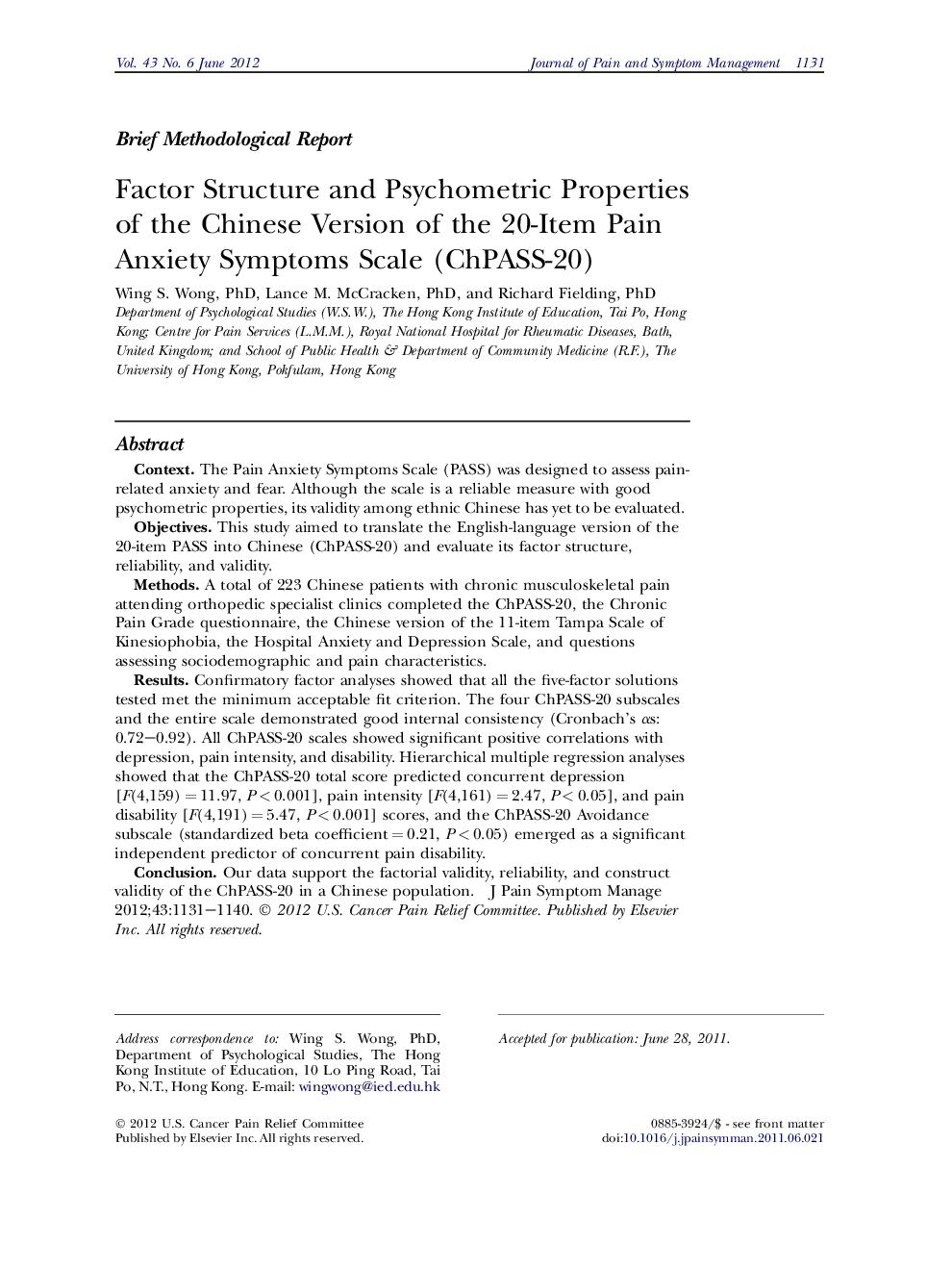| Article ID | Journal | Published Year | Pages | File Type |
|---|---|---|---|---|
| 2729819 | Journal of Pain and Symptom Management | 2012 | 10 Pages |
ContextThe Pain Anxiety Symptoms Scale (PASS) was designed to assess pain-related anxiety and fear. Although the scale is a reliable measure with good psychometric properties, its validity among ethnic Chinese has yet to be evaluated.ObjectivesThis study aimed to translate the English-language version of the 20-item PASS into Chinese (ChPASS-20) and evaluate its factor structure, reliability, and validity.MethodsA total of 223 Chinese patients with chronic musculoskeletal pain attending orthopedic specialist clinics completed the ChPASS-20, the Chronic Pain Grade questionnaire, the Chinese version of the 11-item Tampa Scale of Kinesiophobia, the Hospital Anxiety and Depression Scale, and questions assessing sociodemographic and pain characteristics.ResultsConfirmatory factor analyses showed that all the five-factor solutions tested met the minimum acceptable fit criterion. The four ChPASS-20 subscales and the entire scale demonstrated good internal consistency (Cronbach’s αs: 0.72–0.92). All ChPASS-20 scales showed significant positive correlations with depression, pain intensity, and disability. Hierarchical multiple regression analyses showed that the ChPASS-20 total score predicted concurrent depression [F(4,159) = 11.97, P < 0.001], pain intensity [F(4,161) = 2.47, P < 0.05], and pain disability [F(4,191) = 5.47, P < 0.001] scores, and the ChPASS-20 Avoidance subscale (standardized beta coefficient = 0.21, P < 0.05) emerged as a significant independent predictor of concurrent pain disability.ConclusionOur data support the factorial validity, reliability, and construct validity of the ChPASS-20 in a Chinese population.
